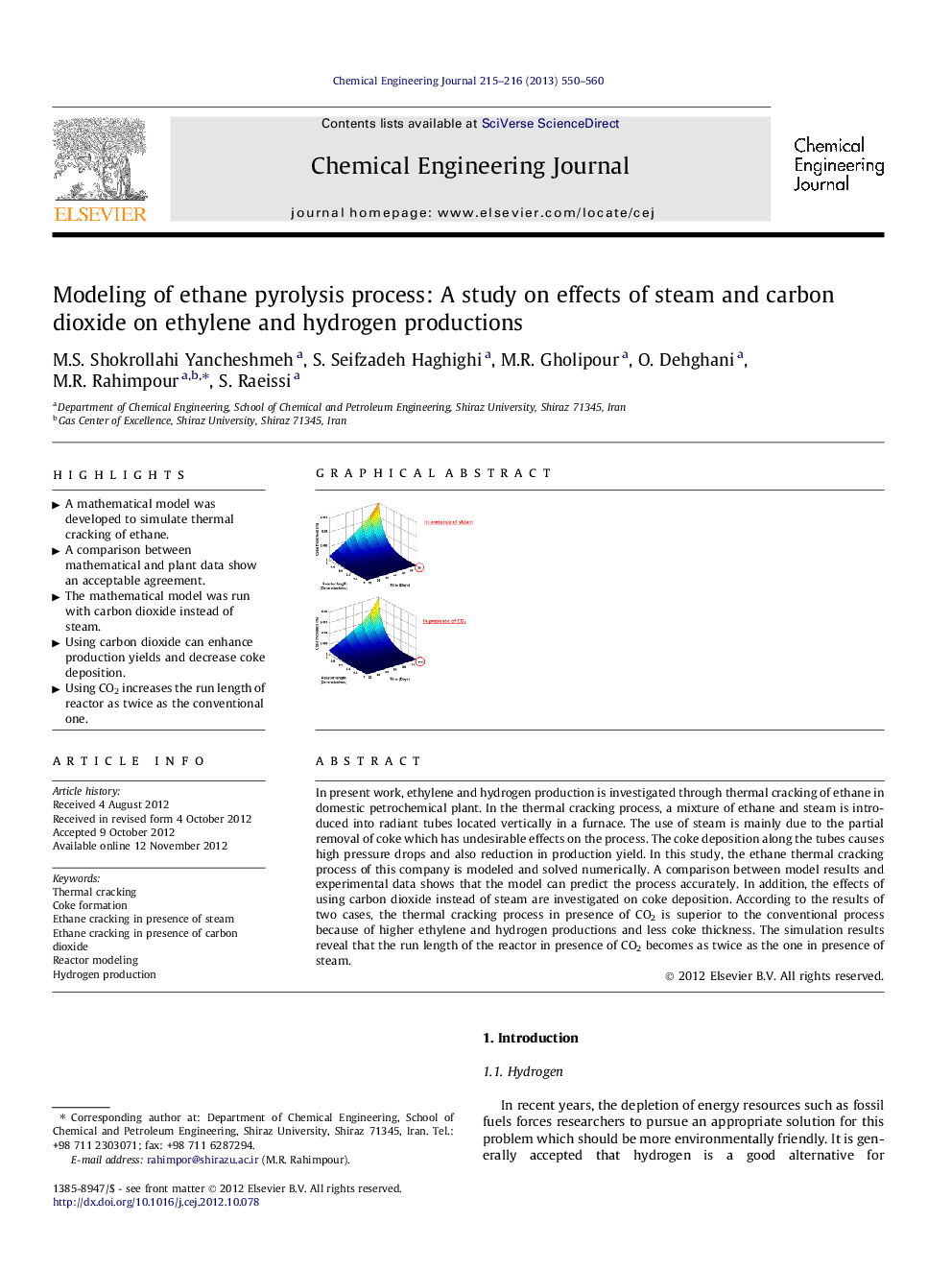| کد مقاله | کد نشریه | سال انتشار | مقاله انگلیسی | نسخه تمام متن |
|---|---|---|---|---|
| 149013 | 456425 | 2013 | 11 صفحه PDF | دانلود رایگان |

In present work, ethylene and hydrogen production is investigated through thermal cracking of ethane in domestic petrochemical plant. In the thermal cracking process, a mixture of ethane and steam is introduced into radiant tubes located vertically in a furnace. The use of steam is mainly due to the partial removal of coke which has undesirable effects on the process. The coke deposition along the tubes causes high pressure drops and also reduction in production yield. In this study, the ethane thermal cracking process of this company is modeled and solved numerically. A comparison between model results and experimental data shows that the model can predict the process accurately. In addition, the effects of using carbon dioxide instead of steam are investigated on coke deposition. According to the results of two cases, the thermal cracking process in presence of CO2 is superior to the conventional process because of higher ethylene and hydrogen productions and less coke thickness. The simulation results reveal that the run length of the reactor in presence of CO2 becomes as twice as the one in presence of steam.
Figure optionsDownload as PowerPoint slideHighlights
• A mathematical model was developed to simulate thermal cracking of ethane.
• A comparison between mathematical and plant data show an acceptable agreement.
• The mathematical model was run with carbon dioxide instead of steam.
• Using carbon dioxide can enhance production yields and decrease coke deposition.
• Using CO2 increases the run length of reactor as twice as the conventional one.
Journal: Chemical Engineering Journal - Volumes 215–216, 15 January 2013, Pages 550–560